decksurgeon
177

THE PILOT'S CHRONOGRAPH......German & Monopusher
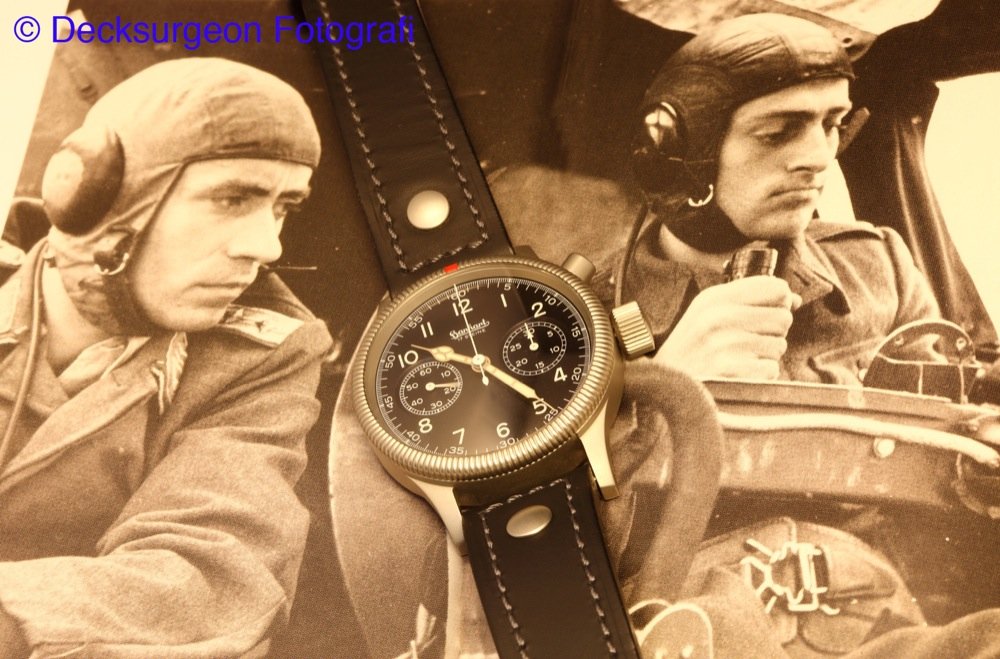
THE PILOT'S CHRONOGRAPH
Almost every watch company today has an offering of a "pilot's chronograph watch".
Some watches are more "pilot chronograph worthy" than others and are a pillar of strength reminiscent of the originals that served the brave men of the skies in WWII. If you were extremely punctilious, a certain Big Pilot's watch is actually a navigator watch and therefore is a misnomer with it's modern day name.
In this short article, I won't bore you will all the usual advertising speak on "pilot's chrono watches" and their key marketing words of being 'antimagnectic' and 'resistant to loss of cabin pressure' et cetera.
The aim is to take you too the roots of a chronograph watch that was worn by the WWII German Pilots.
First we must ask ourselves, what is the fundamental essence of a pilot's chronograph watch and how was it used by the pilot? Why did the pilot wear a chronrograph? How did the pilot use one?
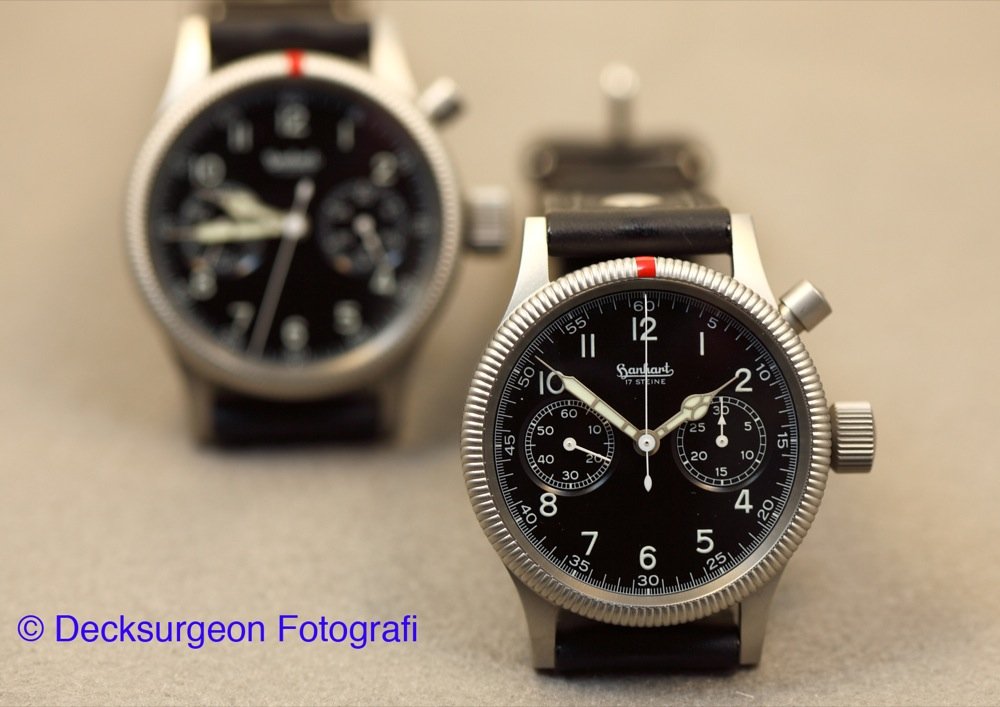
The answer is simply because the pilot's needed a quick and reliable timepiece to aid him in navigation of the aircraft. The number one tool of any pilot was the compass and these watches were the tools used in conjunction with and flight charts and slide rules, adjustments were necessary for time error as small deviations in time accuracy would lead to a huge error in flight calculations (fuel consumption, longitude/latitude position and time to destination calculations et cetera).
In aviation times of past (present we use GPS!), with the aid of the compass and known speed; dead reckoning allows a pilot to determine his present position by projecting his past courses steered and speeds over ground from a known past position. He can also determine his future position by projecting an ordered course and speed of advance from a known present position.
It would be near impossible for a German Stuka pilot to use a sextant combined large chonometre clock and then do the required calculations to figure out his location. The pilot was simply too busy trying to fly the plane (no autopilot unlike the aircraft of today). Speed, distance and time are intertwined by a fixed formula Distance=Speed x Time. The pilot knows the speed of the aircraft and he now needs an accurate, fast and reliable watch to measure the time - This is where the pilot's chronograph comes into the picture.
Traditionally in air navigation, displacement or position caused by wind were taken into account, using a tool called a wind triangle. [The wind triangle is a graphical representation of the relationship between aircraft motion and wind in a vector diagram.] Dead reckoning (DR) positions were calculated at least once every 300 miles or when making combined turns totaling more than 30 degrees from the initial heading out of the last DR position. The watches also had rotating bezel (the ring surrounding the watch dial) that can be turned in order to allow the pilot to perform different timekeeping functions by tuning the marker on the rotating bezel.
The other method of navigation was by using radio "lighthouses" or on the ground. In WWII these beacons would send out a signal followed by radio silence at fixed intervals. A chronograph was used to time the interval of this signal to identify the beacon - e.g. becon had signal beep once every 20 seconds. Sometimes the (later and more modern) aircraft also may have an automated display which shows the direction of the beacon from the aircraft. The pilot may use this bearing to draw a line on the map to show the bearing from the beacon. By using a second known beacon, two lines may be drawn to locate the aircraft at the intersection of the lines. This is called a cross-cut method to determine own location based on two known beacon positions.
Later on in the the beacon got more advanced and this was called a "compass transmitter". This kind of beacon transmitted a focused radio beam that rotated clockwise thru 360 degrees. It would pass thru north at exactly the start of each new minute. So if the pilot head the signal in his headset 30 seconds after each new minute, his present position was due south of the compass transmitter. The pilot would obviously start his chronograph on hearing the start signal and stop it when he heard the direction signal in his headset to get this bearing information. One could also extrapolate that if the pilot had a split second chronograph on the wrist, he could simultaneously time two such beacons in succession and once again use a cross-cut method to determine own location.
Interestingly in WWII when the British flew into German territory at night, there were obviously no beacons on German soil to guide the bombers/aircrast into Germany for their run. The Swiss actually extended broadcast on some of their radio stations well past the closing times to serve as 'beacons' and the British pilots used the signals of these radio stations to reach their targets. It took a while for the Germans to figure out why the Swiss radio stations were sometimes broadcasting past their closing times into the night to give the British an important navigational aid (Radio back then was different, it was not 24hrs - the radio station would close at night).
Rotating Bezel with Red-Marker on the Watch, The Bezel is knurled for grip when operating with gloved hands
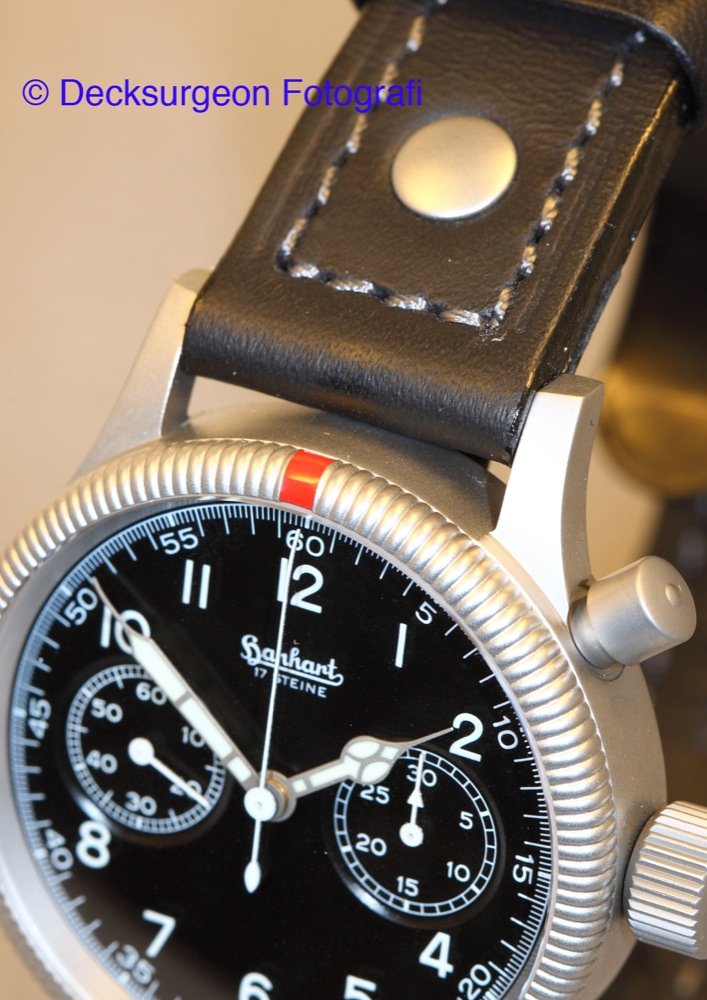
CAPTAIN WEEMS AND THE ROTATING BEZEL
Philip Van Horn Weems was the grandfather and inventor of the rotating bezel concept. He taught navigation at the US Naval Academy and developed a carriage clock in 1929 that had a rotating subdial at the center and this was protected by patent. Watches/Clocks then did not have a stop-second (hack) function and users also feared that stopping the movement would severely disrupt its precision. On Weems' clock when the user wanted to synchronize it with a known time signal, the subdial was rotated so the second hands pointed directly at 60 seconds. This was the basis of the modern day rotating bezel.
There are two practical advantages of a rotating bezel over and internal mechanism:
(1) the mechanism was situated in the case than the movement
(2) It could be operated while wearing gloves.

Most of the manufacturer advertisements (eg IWC's special watch for pilots) at the time never called this a "rotating bezel" as it would not want to be in a position to infringe on Weems' patents. Instead the various manufacturers mention it as 'an indicator to register elapsed flight times'.
The other use of the rotating bezel in flight was to record the result of a second bearing or a point in time where the last change was made in the aircraft's heading.
You can read more about Captian Weems here:
www.weems-plath.com
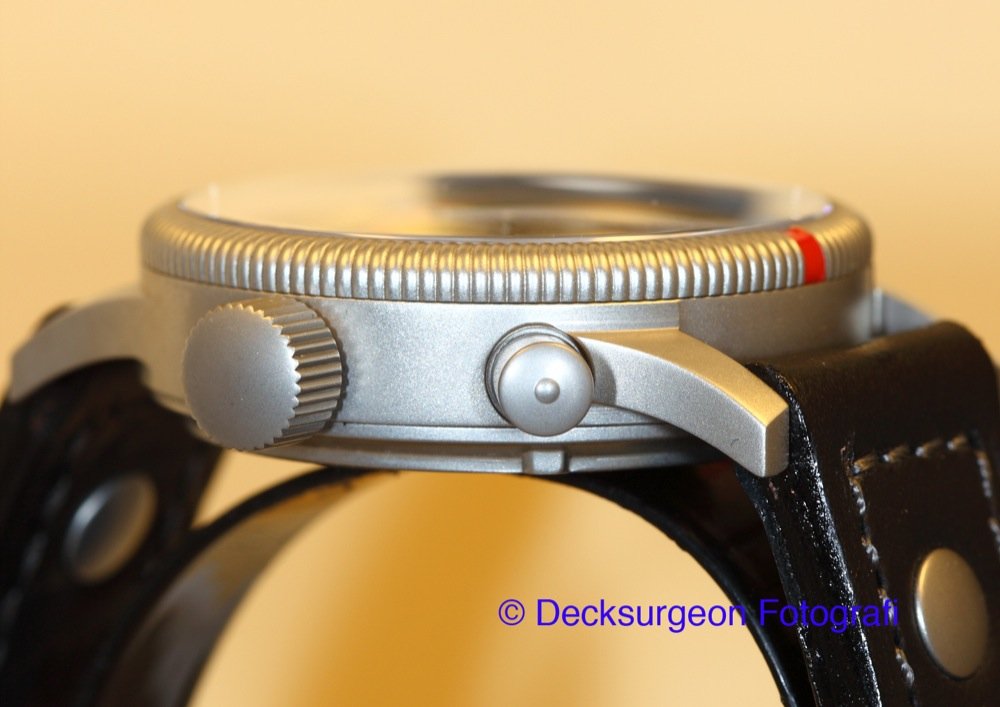
SO WHY DO SOME WATCHES HAVE A CHRONO AND SOME WATCHES DO NOT HAVE A CHRONO?
Short answer is that if you were German you had a Chronograph.
If you were on the Allied forces side, you would have a navigator's watch without chronograph and be issued separately a pocket stopwatch (sometimes split second).
The reason for excluding a chronograph function on the allied watches was because the Allies often had to fly their planes deep into enemy territory and far beyond the reach of friendly radio or compass beacons. Under these conditions the only reliable and accurate navigation was by celestial navigation which in turn depended upon extremely accurate timekeeping. Because the rate of a watch would suffer some deviation on activation of the chronograph (known as chronograph drag) all watches used for celestial navigation were issued without any chronograph for the sake of precision. [*therefore your original 1940 IWC Big Pilot watch is a Navigational Watch used by the Navigator for Celestial navigation missions as there is no chronograph]
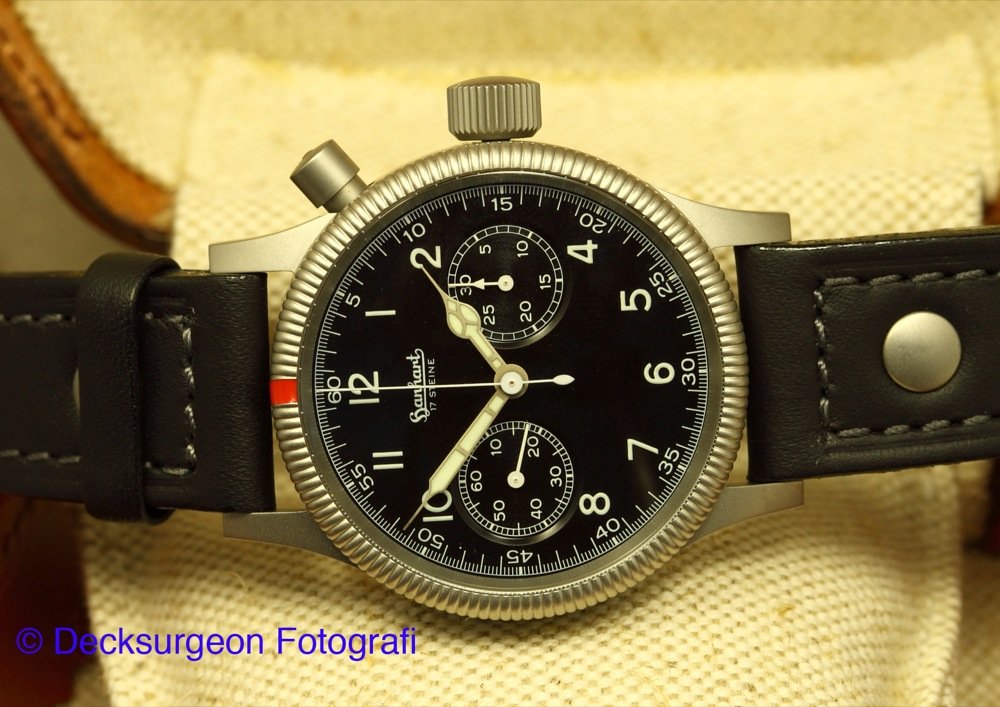
THE HANHART PILOT'S CHRONOGRAPH
The original Hanhart watch factory was founded in Diessenhofen, Switzerland, in 1882 by watchmaker Johann Adolf Hanhart. Interestingly this town was also located on the river Rhine. Johann himself served as the mayor in that town for a number for years and in 1902 the company moved to Schwenningen, Germany, long considered the center of German clock manufacturing. Wilhelm Julius Hanhart was the son of Johann and he joined the family business also and established a watch manufactory in Germany.
The company soon gained a reputation for producing some of the finest chronographs, wristwatches, pocket and sport watches, and professional gauges and instruments.
The stopwatches themselves were worthy of mention being world’s first reasonably priced mechanical stopwatch in 1924. Prior to that stopwatches came exclusively from Switzerland at that time and were only available at exorbitant prices – if at all – since essentially only individual watches were produced to order. Willy Hanhart became so irritated by this that he decided to manufacture stopwatches himself

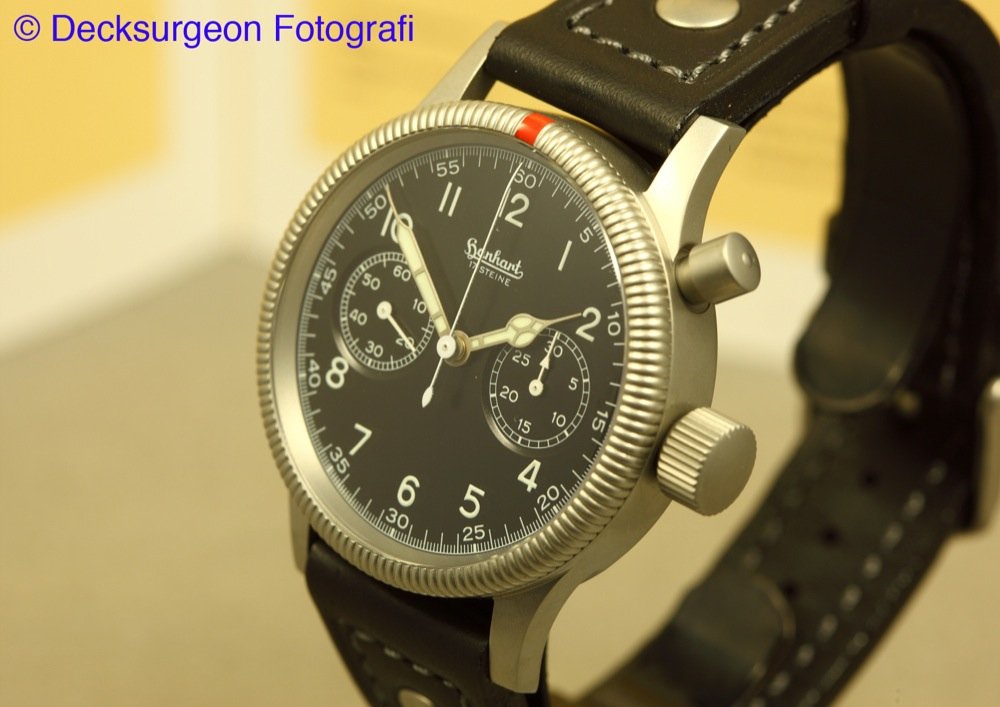
Though the name travelled well throughout the world into the early decades of the 20th century, it wasn’t until the years of the WWII that lasting history would be made. Though numerous timepieces were produced, the Luftwaffe fighter pilot and Kriegsmarine U-boat commander chronograph wristwatches (naval vessels also navigated by dead rekoning at times) will likely be those best remembered and desired by watch collectors.
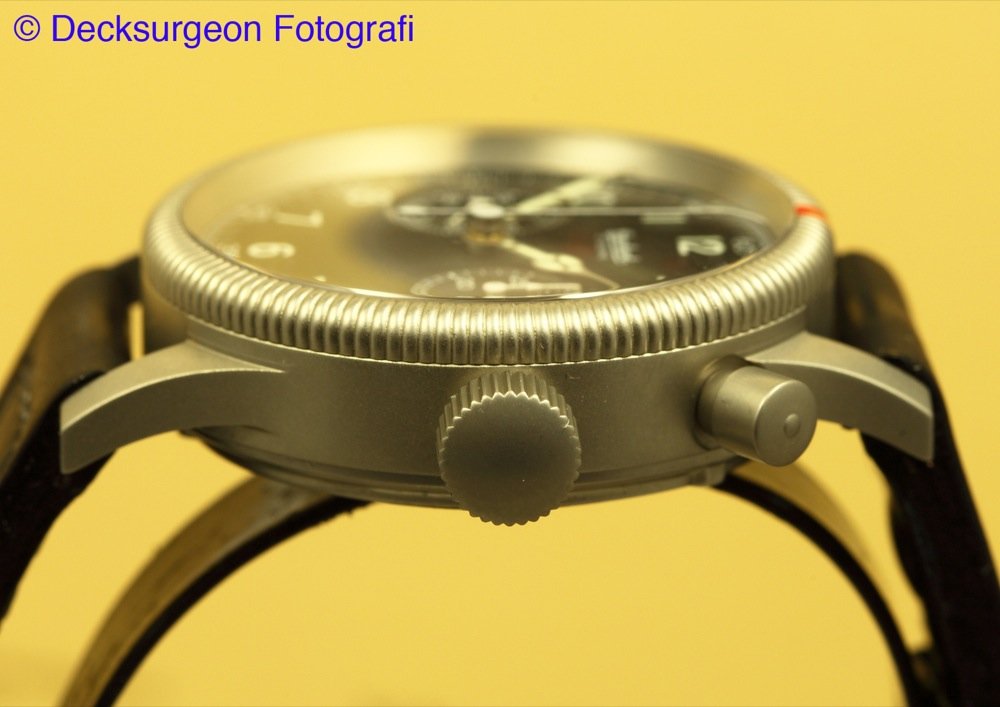
In 1938 Hanhart revealed the single button "Calibre 40" chronograph and
this marked the start of a new epoch in the history of the company –
when the first Hanhart chronograph model entered series production.
This “Calibre 40” would soon become established as the company’s main
product.
The legendary “Calibre 41” and “Tachy Tele” pilot’s chronographs followed one year later in 1939. These chronographs had a red painted button pusher and this coloration was to prevent unintentional resetting.
During the war, Navy officers and Stuka pilots wear chronographs that are capable of withstanding the most severe tests and these were made by Hanhart (and other manufacturers).
1940 Hanhart Caliber 40

The Hanhart Tachy Tele Watch (with additional red scale)

Hanhart Caliber 40 - Column Wheel Controlled Chronograph

However at the end of the war, the businesses in Schwenningen and Gütenbach were looted and dismantled. Most of the machines were taken to France. Willy Hanhart was interned and the business was compulsorily wound up. Willy filed for bankruptcy.
In 1947 Willy had fled to Switzerland and returned to Germany by 1949 and with the help of his wife Gertraud begins the reconstruction of the Hanhart brand. The company headquarters were rebuilt in Schwenningen in 1952. In the same year, Hanhart participated for the first time in the Swiss Watch Fair – now known as Baselworld. Hanhart also equipped the German Armed Forces, with pilot’s chronographs again, their manufacture ceased in 1962 and gradually also the production of wristwatches. From then on Hanhart made stopwatches and the company became the market leader and Europe's largest producer of stopwatches.

In 1938, the manufacturing company with headquarters in Gütenbach in the heart of the Black Forest, develops the first model of Hanhart chronographs that are soon to become the firm’s flagship product: the single-button chronograph "Caliber 40” which is followed by the two-button chronographs "Caliber 41" and Tachy Tele. From the 1950s on Hanhart concentrates on the production of mechanical stopwatches and the company discontinues the production of the pilot chronographs. In the 1960s Hanhart becomes market leader for stop watches and until today this remains the most important line of the manufacturing plant at the famous “Deutsche Uhrenstrasse”.
The demise of Germany in WWII brought an end to production until 1948. In 1997, offices and production moved to Gutenbach in the Black Forest, where Hanhart’s stop watches had been made since 1924. Hanhart continued to make stopwatches and rode out the quartz era and low priced watches from the Far East by manufacturing a Hanhar Cal 3305 that sold 40 million units!
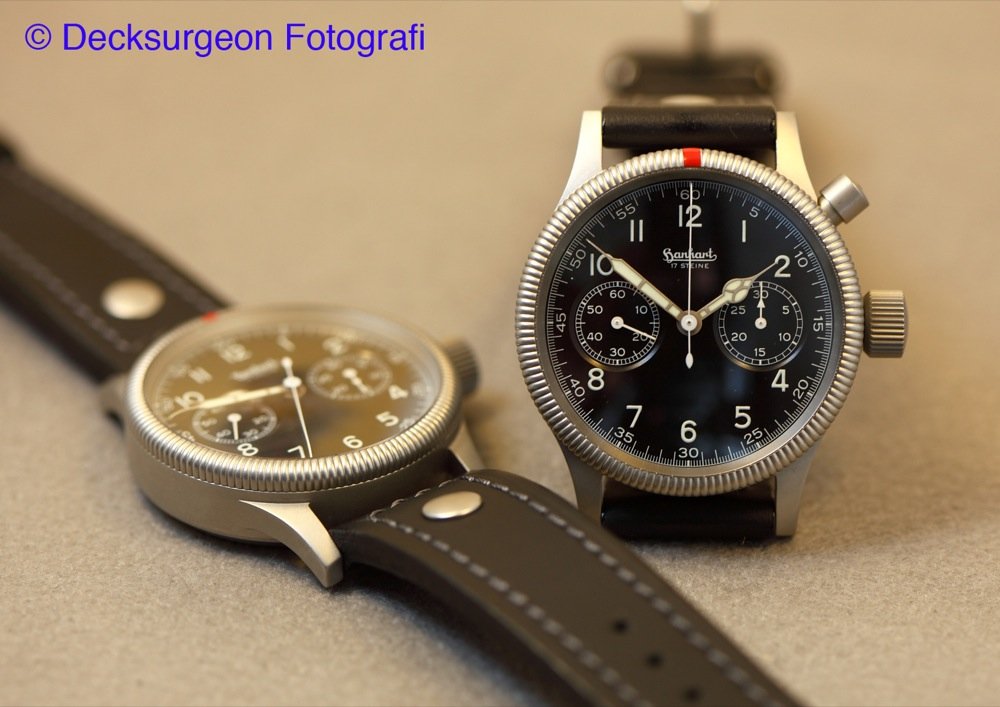
Fast forward to present day, the legendary Hanhart pilot’s chronograph of 1939 was presented as a replica at the Antiques Fair in Furtwangen in August 1997. Every detail of the original’s case and dial was copied with the greatest care, from the old Hanhart lettering to the asymmetrical offset of the buttons. The limited edition of 2,500 pieces sold out in only a short time.
The Hanhart Primus Single-Button Chronograph is the modern day interpretation of the WWII Stuka Pilot's Chronograph. The movement inside is a Valjoux 7760 handwinding and the mechnism has been modified to move the mono-pusher upwards nearer to the lugs of the watch like the original Caliber 40. The normal Valjoux 7760 pusher has a more acute angle to the axis of the crown and its very nice to see that Hanhart have endeavored to produce a watch that is authentic to its legendary roots.
The Presentation of the watch - Comes delivered in a Brown Leather case and Muslin Bag type cushion/pouch. Outer box is corrugated cardboard

The modern watch is available in both Automatic and Manual winding. Shown here is the manual winding version that has the "look & feel" true to the original hand-winding Caliber 40 of 1939. The brochure in the picture above shows the Automatic version with the Red colored pusher.
Hanhart Split Seconds Stopwatch -
Loot at the scale carefully: One revolution of the second hand is 30 seconds instead of 60 seconds

War is an unpleasant experience for everyone and the world. When humanity’s darkest hours unfold, there are still good things that can come out of it - humility, courage, honor and in this case a stunning Hanhart Pilot's chronograph and a Hanhart Split Second Stopwatch both of which I treasure very much knowing the depth and breadth of their history today.
The rear hinge of the box

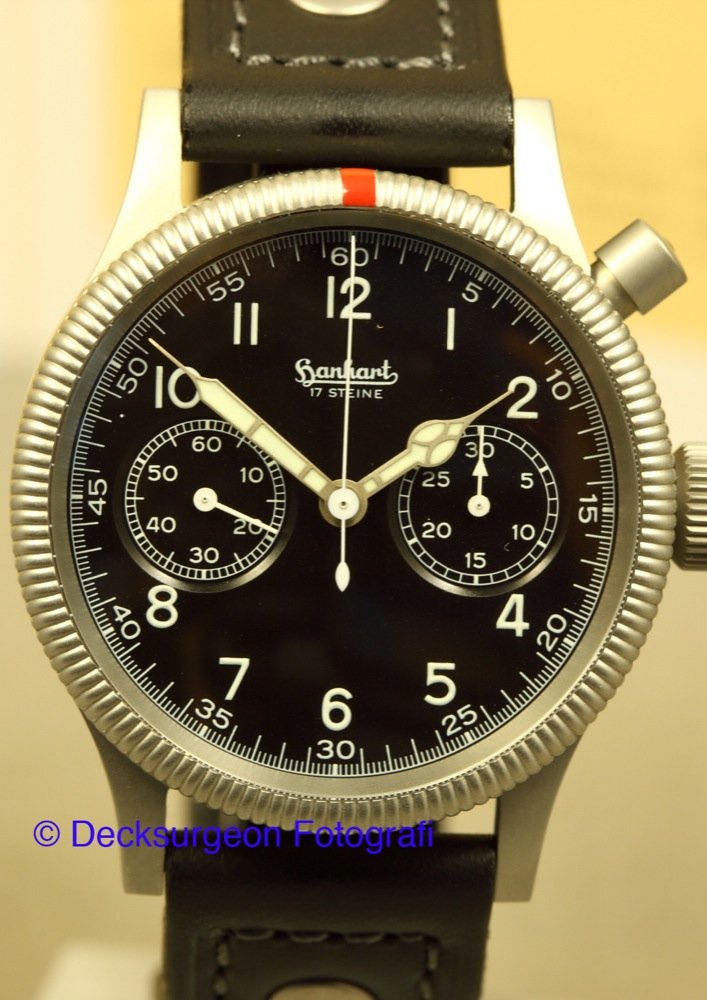
An excellent article on the history of the same Luftwaffe Flieger Chronograph can be found here written by SJX:
general.watchprosite.com


I hope you have been entertained with the Pilot's Chronograph and the pictures !
till the next flight
THE PILOT'S CHRONOGRAPH......German & Monopusher
Hanhart Split Seconds Stopwatch in Action

Great research as usual Decks. Is the rear case


